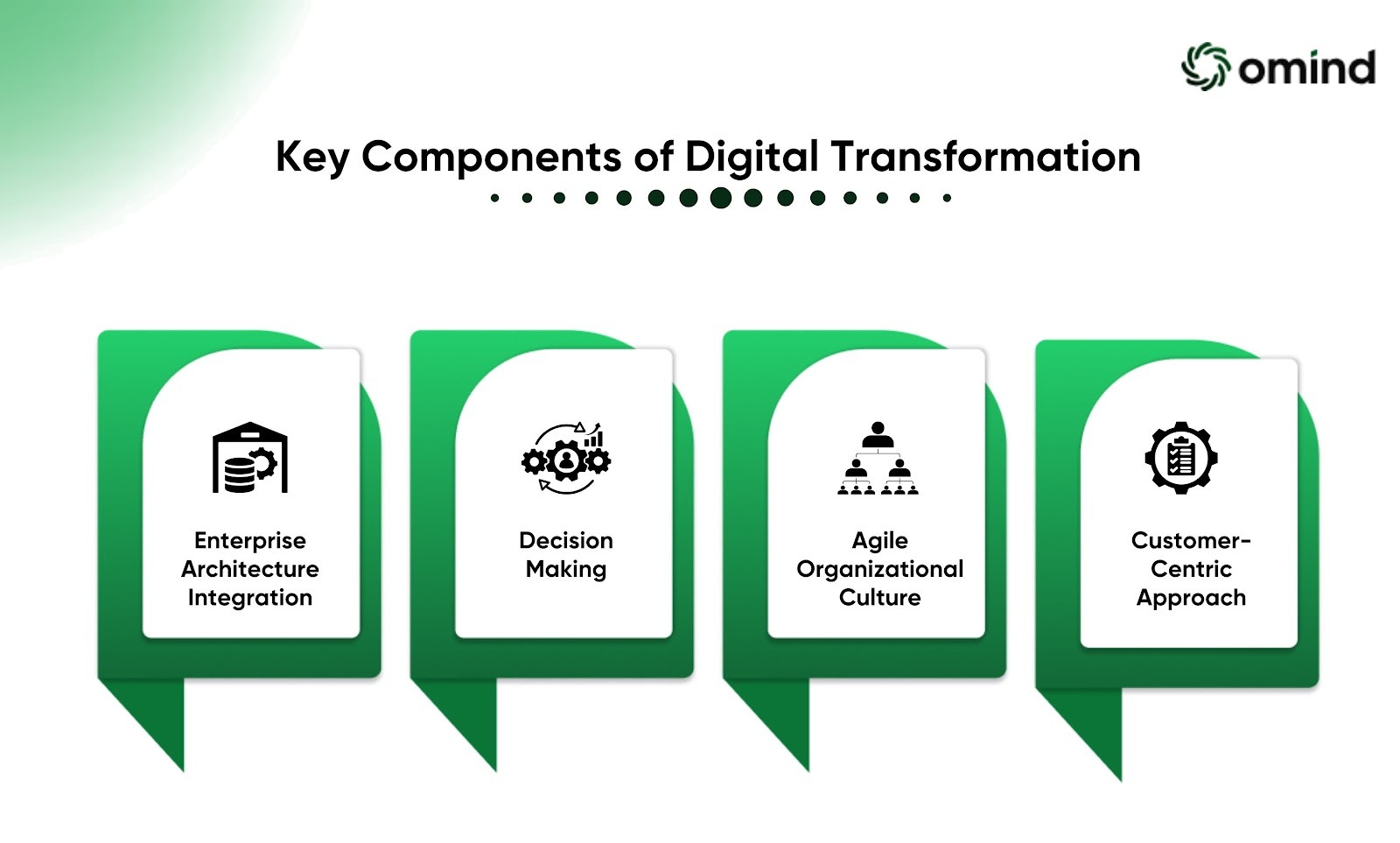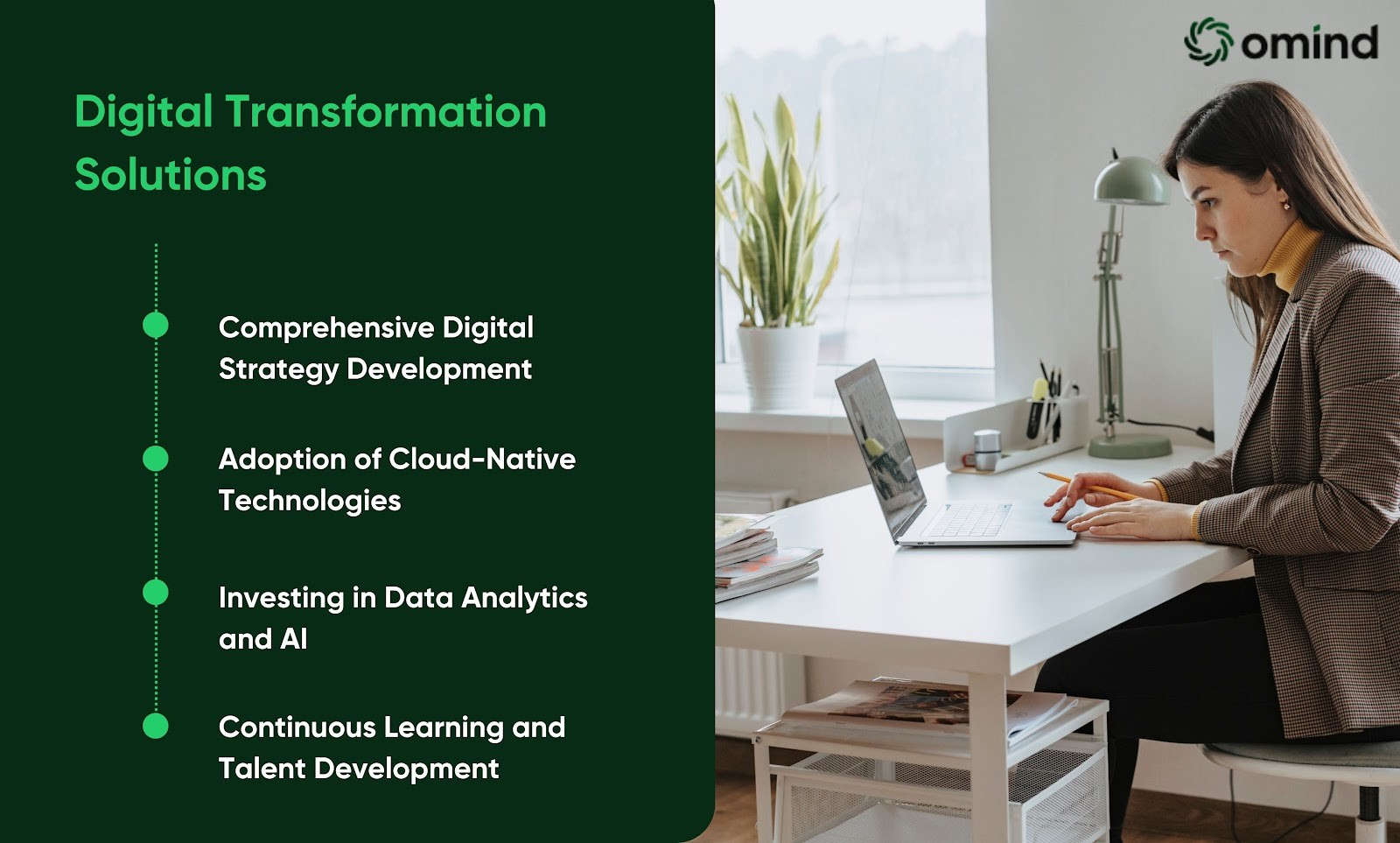The ability to adapt to technological advancements makes a significant difference in today’s business market. The best way forward for organizations seeking to remain competitive, is to improve customer experiences through technology that can help drive growth.
Enter enterprise digital transformation, which is a fundamental shift in how organizations operate, using technology to redefine their business models, processes, and customer interactions. A burgeoning market, it is currently expected to grow to a CAGR of 16.1% by 2027. An enterprise digital strategy involves integrating the latest of great technology into all aspects of an organization's operations, from product development and customer service to internal processes and decision-making. The significance of digital transformation extends into better long-term sustainability.
This article explores the key elements of a good enterprise digital strategy, and some strategies for successful implementation.
How Beneficial Is Digital Transformation?
Digital transformation has a profound impact on a company’s operational efficiency, and also the well-being of its employees. A 2020 report from Infosys states that 57% of organizations reporting a digital transformation being more helpful for the workplace than other forms of transformation. A good enterprise digital strategy reduces the time and resources spent on repetitive tasks and also minimizes human error, leading to better quality of work overall.
Digital transformation can also create a more engaging and collaborative work environment for employees. The adoption of digital tools and platforms enables much faster communication, real-time collaboration, and access to information across the globe. Digital technologies can also facilitate a more flexible work environment, allowing employees to balance their personal and professional lives more effectively.
The changing world of consumer behavior and the rise of remote work have made digital transformation a necessity. Customers increasingly expect personalized experiences across all channels, while employees demand flexible and technology-enabled work environments. Organizations that fail to adapt to these trends risk losing market share and becoming irrelevant.
Critical Drivers for Enterprise Digital Transformation
Several factors are driving the adoption of digital transformation strategies. These include:
Customer Expectations

Personalized Experiences: Customers increasingly demand experiences that cater to their specific needs and preferences. Digital transformation enables organizations to use data analytics to understand customer behavior and deliver personalized recommendations, offers, and content.
Convenient Access: Customers expect easy access to products and services across multiple channels, including online, mobile, and in-store. Digital transformation facilitates omnichannel experiences, ensuring a sophisticated customer journey regardless of the channel used.
Efficient Service: Customers value efficient and responsive service. Digital transformation can streamline customer service processes, reduce wait times, and provide self-service options.
Market Competition
Differentiation: With so much competition out there, organizations must differentiate themselves to stand out from the crowd. Digital innovation can provide a unique selling proposition, attracting and retaining customers.
Product and Service Improvement: Digital transformation enables organizations to develop products and services that meet evolving customer needs. By using emerging technologies, businesses can create new revenue streams and gain a competitive edge.
A Better Customer Experience: Organizations that invest in digital transformation can deliver superior customer experiences.
Business Agility
Rapid Response to Market Changes: Digital transformation allows organizations to adapt quickly to changing market conditions. With analytics and automation, businesses can identify trends and introduce new products or services efficiently.
Seizing New Opportunities: Digital transformation can open up new business opportunities. By embracing emerging technologies, organizations can explore new markets, develop niche business models, and create new revenue streams.
Risk Mitigation: Digital transformation can help organizations mitigate risks by improving operational efficiency, reducing costs, and enhancing decision-making.
Regulatory Compliance
Meeting Industry Standards: Many industries face stringent regulatory requirements. Digital transformation can help organizations comply with regulations by automating compliance processes, ensuring data security, and maintaining accurate records.
Avoiding Penalties: Non-compliance with regulations can result in hefty fines and penalties. Digital transformation can help organizations avoid these risks by implementing robust compliance measures.
Building Trust: Adherence to regulatory standards demonstrates an organization's commitment to ethical practices and builds trust with customers, partners, and stakeholders.
Key Components of Digital Transformation

A successful enterprise digital strategy requires a comprehensive approach that addresses several key components:
Enterprise Architecture Integration: A robust enterprise architecture ensures that technology investments align with business objectives and support integration across systems.
Decision Making: Organizations must use data analytics and insights to make informed decisions.
Agile Organizational Culture: A culture that embraces change, experimentation, and continuous learning is essential for successful digital transformation.
Customer-Centric Approach: Placing the customer at the center of all digital initiatives is crucial for delivering exceptional experiences and driving business growth.
Benefits of Enterprise Digital Transformation
The benefits of an enterprise digital strategy are numerous. Let’s take a look at some of them below.
More Detailed Customer Insights: Digital transformation enables organizations to collect and analyze vast amounts of customer data, providing valuable insights into preferences.
Operational Optimization: By automating processes and streamlining workflows, organizations can improve efficiency immensely.
Business Profitability and Flexibility: Digital transformation can drive revenue growth, increase profitability, and improve an organization's ability to adapt to changing market conditions.
Improved Customer Experience: With digital technologies, organizations can deliver omnichannel experiences that exceed customer expectations.
Better Futureproofing: By embracing digital transformation, organizations can position themselves for long-term success in the digital age.
Challenges of Enterprise Digital Transformation
Implementing digital transformation can be fraught with challenges. One major obstacle is the presence of outdated legacy systems, which can hinder the integration of new technologies. An organizational resistance to change can also pose a significant hurdle. Employees may be hesitant to adopt new technologies, especially if they are unfamiliar with the new tools.
The increased reliance on digital technologies also exposes organizations to cybersecurity risks and data privacy concerns: 2024 has seen over 10,000 confirmed data breaches till present. Protecting sensitive data and preventing cyberattacks is crucial but can be challenging. Finally, acquiring and retaining the talent necessary to drive digital transformation initiatives can be a significant challenge, as organizations may face skill gaps and competition for top talent.
Strategies for Successful Digital Transformation
Overcoming the challenges of digital transformation requires a strategic approach. Organizations should conduct a thorough assessment of their current digital maturity to identify areas for improvement. This assessment will provide a baseline for measuring progress and setting realistic goals.
They should then define a clear vision and goals for their digital transformation journey. This vision should align with the overall business strategy and outline the desired outcomes. Once the vision is established, a detailed action plan can be developed, outlining the key initiatives, timelines, and resource allocation required to achieve the goals. Effective implementation involves monitoring progress, making necessary adjustments, and continuously evaluating the effectiveness of the digital transformation strategy to ensure ongoing success.
Digital Transformation Solutions

To support digital transformation initiatives, organizations can use a variety of solutions, including:
Comprehensive Digital Strategy Development: Partner with experienced consultants to develop a tailored digital strategy that aligns with your business objectives.
Adoption of Cloud-Native Technologies: Embrace cloud-based solutions to improve scalability, flexibility, and cost-efficiency.
Investing in Data Analytics and AI: Utilize artificial intelligence to extract valuable insights from your data and automate processes.
Continuous Learning and Talent Development: Invest in training and development programs to equip your workforce with the skills needed to drive digital transformation.
A Roadmap For Transformation
Enterprise digital transformation is a critical imperative for organizations. Through an understanding of the key components and strategies for successful implementation, organizations can navigate the complexities of digital transformation and position themselves for long-term success.
If you’d like to get a head start on the enterprise digital strategy for your organization, Omind is your answer. We use the best of generative AI to bring to you a conversational platform that helps visitors engage with your business, and give you analytics that help make their experience holistic. To see how our platform works, schedule a demo today.
AUTHOR
Team Omind
Empowering Businesses with Unified Customer Experience Platform, Leveraging Advanced AI and Intelligent Automation
PRODUCT
Unified CXM
Share LINK
Related Blogs




